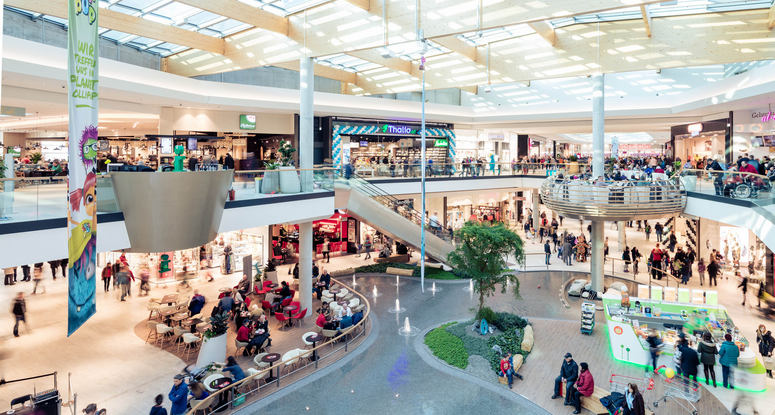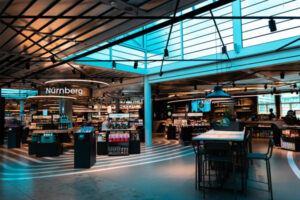Hardly any high-quality retail real estate is currently available on the market for investors, the Viennese real estate service provider EHL reported in its current business area report 2017.
The Viennese retail market remains attractive in a European comparison. This is due to its strong purchasing power of €22,000 per capita, which is steadily, if only slightly, rising. In addition, the top segment of the retail sector is benefiting from excellent developments in the tourism industry. The number of overnight stays rose by 4.4% in 2016 to a high of almost 15 million.
Vienna’s attractiveness as a retail location is also reflected in global rankings. The city currently occupies 13th place in the ranking of the most popular retail expansion destinations in the world and it is one of the five most coveted cities in Europe. 15% of internationally active retailers want to expand to or to Austria. That number is also one of the highest internationally, reported EHL.
The market entries are predominantly from fashion chains like the H&M brands Monki and Weekday, which have each opened a store in Mariahilfer Straße. Other segments include NYX Professional Makeup and the household appliance manufacturer Vorwerk, which have opened in SCS and the Donauzentrum. There are also some high-profile new arrivals expected in Austria for 2017. At the beginning of the year, the UK’s star chef Jamie Oliver announced the opening of three restaurants at Vienna’s Airport.

The prime locations in the city center and the largest and most-visited shopping centers are benefiting most from this strong demand, however. Rents will continue at their current levels in these top locations. Rents on Kohlmarkt run as high as €400 per sq m, placing Vienna in 10th place among the highest international rents. Rents on Kärntnerstrasse are up to €250/sq m and those on Mariahilfer Straße are around €120/sq m. Rental rates in the top shopping centers are as high as €125/sq m.
For B-locations—including some places that were attractive even just a few years ago—the situation is increasingly difficult. The overall number of new leases is decreasing and the vacancy rate is rising. Owners must expect longer decision times and periods of vacancy and therefore accept lower rents and shorter leases in the case of subsequent rentals away from the top locations.
Hardly any new space
“Quality improvement instead of new space” is the current motto at Vienna’s shopping centers. In 2017, the Viennese market will see just one relatively large new build, with 5,500 sq m of lettable retail space opening in the new post office headquarters at Rochusmarkt. Expansion activities are also modest: The expansion of Huma Eleven by 50,000 sq m, which has been running since 2015, will be completed in 2017 and 1,500 sq m of new areas have been completed in Seestadt Aspern’s Seeparkquartier. The concentration among the absolute top locations is also clearly visible in shopping centers. There are hardly any vacancies in the four largest centers in Vienna: SCS, Donauzentrum, the Auhof Center, and Huma Eleven, and rent levels there will also remain the same or even increase slightly.

Growth among Austria’s retail parks
There is more new construction going on among retail parks than among shopping centers. Projects are currently being developed in Trausdorf in Burgenland and in St. Pölten in Lower Austria. The sale of the UNO shopping center in Leonding, which had stood empty for years, caused a stir at the end of 2016. It will now resume operation as a smaller retail park with approx. 15,000 sq m of area. Nevertheless, the trend among retail parks, too, is increasingly towards investing in quality improvements rather than extensions and new buildings.
Low transaction volumes for commercial real estate
In total, commercial properties worth €2.7 billion changed hands in Austria in 2016. This reflects a decline of 20%, or €800 million, compared to the previous year. In a market dominated by large office and hotel transactions, the retail segment played an unusually minor role, with just 13% of the transaction volume. This comparatively low level of €350 million is mainly because hardly any objects were available in the retail segment. The segment will be affected by this lack of product availability in 2017 as well because, in contrast to the construction boom in the office market, only a few new retail parks and shopping centers will be launched this year, EHL reported.
Private investors discover the retail segment
Demand for retail properties remains high. As a result of the supply shortage, most sales occurred outside of the core segment, except for the sales of retail parks in Stadlau, Hartberg, and Asten. In contrast to the office market, where investment activity is concentrated almost exclusively in Vienna, retail properties are also in demand in the federal states. Some of the most significant transactions of recent months illustrate this. The largest transaction in 2016 was the EHL-facilitated sale of an Immofinanz retail portfolio with 88 properties in eight federal states.
EHL was also able to finalize the sale of the UNO shopping center in Leonding. The shopping center, which closed in 2015, is to be reopened as a retail park on a reduced area. Apartments will also be built on part of the site. At the beginning of 2017, EHL also facilitated the sale of ZIB in Salzburg. The buyers were private investors in each case. This underscores the trend whereby private investors increasingly see smaller shopping centers and local supply units as safe investment alternatives, which, in contrast to residential properties, also promise significantly higher returns.
Yields remain under pressure
The top yields in the retail segment are 4% for shopping centers and 5.5% for retail parks. It is expected that the still-very-large gap between real estate yields and those on fixed income securities (bonds and mortgage bonds) will continue to decline. Consequently, yields in all segments of the commercial real estate market, and thus also in the retail segment, will tend to fall further. The demand for retail real estate is driven primarily by international special funds. There are currently hardly any suitable products on the Austrian real estate market because declining development activity has been accompanied by continuously high liquidity pressure. Prices will thus continue to rise.






